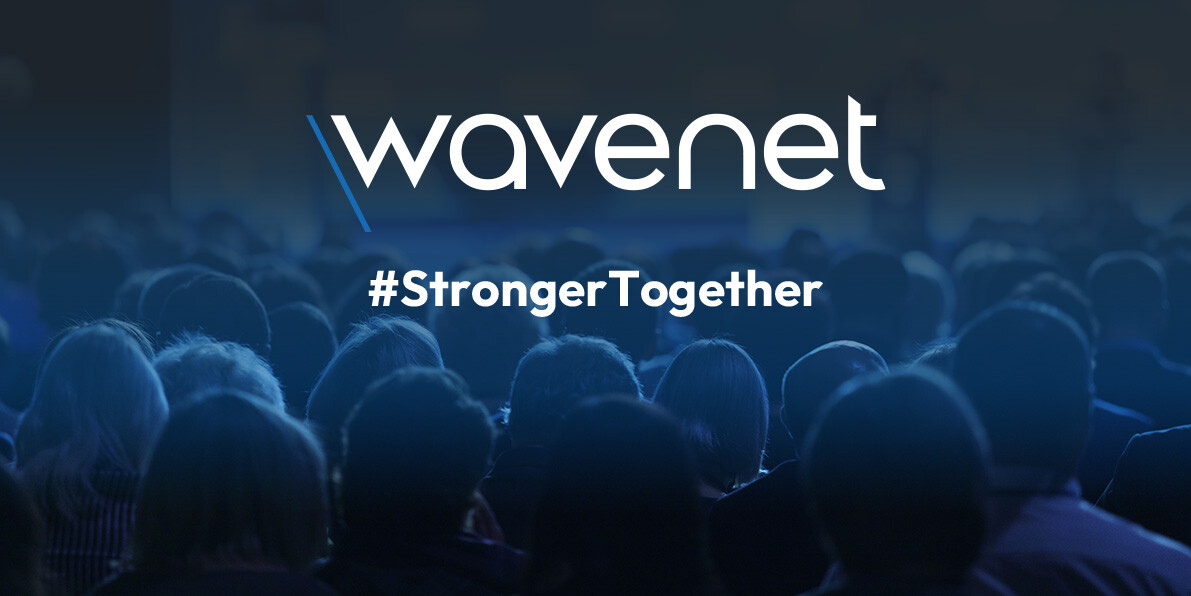Stay service-savvy
Get all the latest news and insights straight to your inbox.

As the Solutions and Strategy Director at DCS/Wavenet, I wanted to share a summary of our first Sales Kick Off event for the combined Wavenet and DCS businesses, held from the 10th to the 11th of September 2024 in Birmingham. This was the first time the respective teams have been brought together from both businesses, and with a packed agenda and over 500 attendees, including 28 partners, the scale and ambition for the event was impressive throughout the two days.
It was fantastic to catch up with old colleagues, meet new ones, and spend quality time with our key strategic partners. However, the highlight as always were the experiences and insights shared by our customers.
The overarching theme of the event was ‘Stronger Together’, and this was evident from the outset with Mark Phillips’ (Wavenet CRO) keynote, which summarised the unparalleled position the new business has in the market as the UK’s largest independent MSP and a market leader in Cyber Security, Cloud and Intelligent Networks, as well as the essential role our partnerships play in driving shared success.
Together, the combined businesses provide technology, solutions and services to 22,000 customers – having daily contact with an estimated 90%+ of the UK general public. We intend to use this breadth and scale to deliver exceptional value to our customers, whilst maintaining a disrupter’s mindset.
The task is not insignificant. Our customers need support with an increasing level of cyber threats, the WLR switch off, and the impact AI has on their operating models and competition. On top of all this, the skills shortage has left many struggling to realise the revenue, cost, productivity, compliance, customer and user experience outcomes they are seeking.
The opportunity is there. It’s down to us to make the most of our combined expertise, size, scale and partnerships to deliver first-class service to our customers.
My role is to ensure we have the right portfolio, underpinned by the right partnerships to help our customers solve their challenges and achieve their goals. As an MSP, it’s essential we partner with market leading technology and service providers who are the best in their field, so we can deliver the best for our customers.
To that end, it was incredibly insightful to spend time with the 28 partners who exhibited in the vendor village as well as listen to the keynote speeches, breakout sessions and panel discussions from partners such as Microsoft, Extreme, HPE, and Crowdstrike. I found the approach to the sessions particularly pleasing; gone are the days of listening to endless technology pitches with no business context, and instead, the sessions were customer centric, with valuable insights focussed on how to deliver positive outcomes for different types of organisations. Covering essential topics like cyber security, AI and cloud transformation, the content consisted of forward-looking insight into industry trends, offering valuable insights to help our teams stay ahead in a dynamic technology landscape.
To be successful we must develop meaningful, long term, strategic relationships with our customers, becoming trusted partners that can help them focus on the core tasks that drive their businesses forward. The presentations from three of our customers, BrainKind, HS2 and Gulftech, discussed the real-world impact of the technology, solutions and services Wavenet and DCS provides to them. These were the most insightful across the two days, and it was no surprise that it was standing room only in the main hall.
Graham Fisher shared an inspiring speech about how their digital transformation, particularly at three of their new neurological centres, has improved patients’ quality of life and outcomes, allowing staff to spend more time focussing on the people they support.
Dan Bosworth spoke about the unique cyber security challenges HS2 faces as an entity in the public eye, and how the services Wavenet provides have helped them to understand their vulnerabilities and prioritise their responses based on real-world impact.
And lastly, Slaten van Saun from Gulftech emphasised the importance of relationship in the 20-year partnership between our businesses as we transition from providing ITDR services to cyber security, supporting them on their ‘big five’ priorities to improve their cyber resilience. From a personal perspective, I think Slaten’s view of the new combined Wavenet and DCS portfolio summarises our market position perfectly; what we are doing is:
“Taking Daisy and putting Daisy on steroids”
Slaten van Saun
Gulftech
As you can see, it was a busy, but incredibly useful few days. Events like this always give us the opportunity to pause for thought, and having listened, learned and contributed to the discussions throughout the event, I’m positive that we are perfectly positioned to help customers who:
If you would like any further information on our solutions portfolio, the Wavenet and DCS merger, or anything in general, please feel free to contact me.
Mark Hall, Solutions and Strategy Director – DCS/Wavenet | mark.hall@daisyuk.tech
Get all the latest news and insights straight to your inbox.